Mixers & switchers buyers guide
What is a mixer/switcher?
A vision mixer or switcher allows you to take video outputs from multiple devices and switch or “mix” between them. Every live show you’ve ever watched that has cut between different cameras has used one of these devices. They are the cornerstone of broadcast and live events
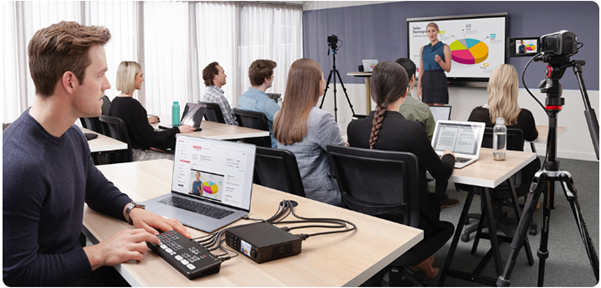
Mixers are used in live broadcast environments, streaming, houses of worship, festivals and so much more. Having the ability to show different angles or scenes gives your production much more choice when it comes to how you wish to present to your audience.
Mixers can also be used to raise the production value of any live event by adding effects, graphics & PiP/PnP (picture in picture) to your output.
Choosing a mixer
Each mixer will feature a variety of different inputs and outputs and will also support specific formats. The most common connections you’ll see are SDI and HDMI as these are standards within lice production environments. You’ll also find common professional audio connections like XLR and ¼” TRS jacks so that you can take an output from an audio mixing console and combine your video and audio.

Some mixers even feature scalers/converters on their inputs to allow you to mix and resolutions and frame rates from different sources because there’s nothing worse than getting to an event to find out there’s a laptop or camera that you just can’t use!
Whilst the core functionality of switching is the same each will also support different features like media pools, DVEs (digital video effects) and keys.
There’s also the question of form factor. Are you going to need an all in one unit for being out in the field, or will you be mounting your switcher in a rack and pairing it with a large control console in a studio? Regardless of your needs, Scan has a switcher for you.
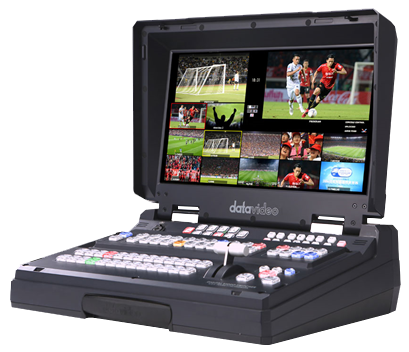
Greenscreen, keys and DVE
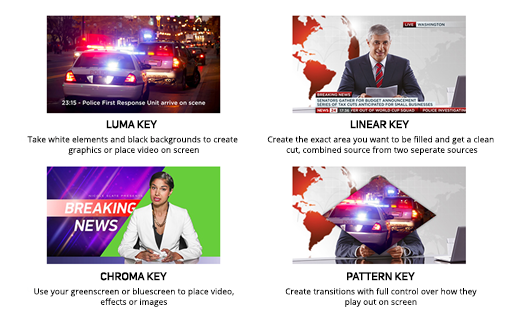
A common function of mixers is what are known as keys. The keys let you cut or “key” out parts of your image. This resulting transparency allows you to layer up different images. A good example of this would be chromakeying whereby you select a specific colour to be keyed out. This is widely used in studios for placing your talent in front of backgrounds or within virtual environments.
You also have the ability to tie chromakeys and other effects to transitions so that when you switch between cameras you can seamlessly add or remove a key. This makes switching between talent shot on a greenscreen and a reporter out in the field as easy as pressing a button!
A DVE or Digital Video Effect can include resizing, moving or rotating a video input. This makes Picture in Picture (PiP/PnP) a breeze. Layering up videos in different positions creates the opportunity to have multiple sources interact, with a good example of this being reporters and news anchors both on screen simultaneously.
With both Upstream and Downstream keys you can layer videos up and place bugs, stings and graphics over your image immediately before playout.
Multiviews
Multiviewers allow you to see each incoming signal as well as your program and preview signals. This allows you to make quick decision on what you want to show. The program view is the signal currently being sent out of the main output on the unit whilst the preview is the signal you have lined up to cut to.
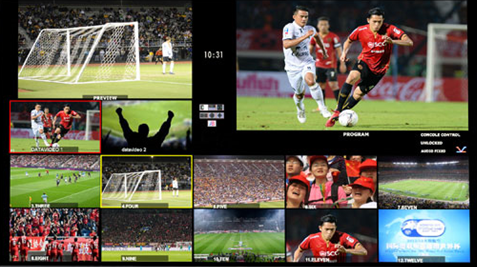
Control surfaces
Whilst not a necessity controls surfaces/hardware panels allow for simpler and quicker control of the switcher. As anyone whose ever been in a live environment knows, having everything at your fingertips takes the stress and confusion of finding things within control software, allowing you to keep your focus on exactly what is happening.
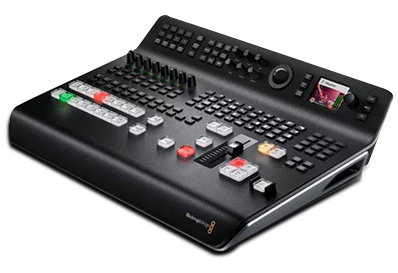
Some control panels actually have the switcher built into them for an all in one unit like the Wirecast Gear 320 or DataVideo HS-2850.
Control surfaces give you all of the functionality of switching including buttons for program, preview, DVEs and transitions and even a T-bar for controlling those transitions.
Talkback
An important part of driving a live production is the ability to have your producer speak with your operators. With a range of talkback solutions your producer can feed instructions to camera operators, mixers and everyone behind the scenes.
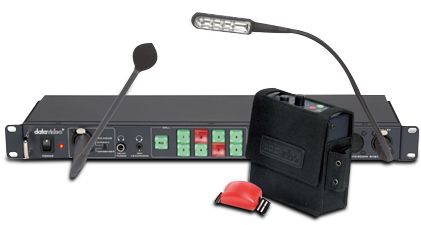
2-wire vs 4-wire
One of the most important parts of interfacing talkback devices with switchers is whether they are 2 wire or 4 wire solutions.
2-wire
In a 2 wire systems, also referred to as partyline systems, have both transmit and receive on two wires. These can be 2-wire unbalanced or 2-wire balanced. The simplicity of this design allows for anyone on the line to listen and talk to anyone else.
4-wire
4-wire talkback systems use different pairs for transmit and receive. This uses either 4-wire balanced or 4-wire unbalanced connections. This type of system allows for more direct communication allowing the producer to talk or listen to a specific operator.
Tally
Tally is a way to communicate which camera is live or on your program output at any given time. A red light often atop the camera indicates to the camera person they are live whilst the button that corresponds to that camera on the mixer will illuminate red to give the vision mixer a quick indication.
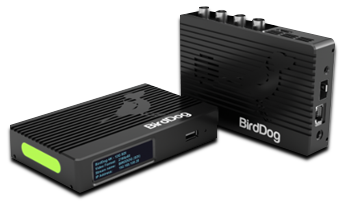
Streaming
The uptake of live streaming has lead to the inclusion of streaming capabilities within the latest live production mixers. New offerings from manufacturers like Blackmagic Design and Roland now include USB outputs that send your program output ready to be streamed immediatel. This lets you reach a much wider audience on platforms like YouTube and Facebook Live.
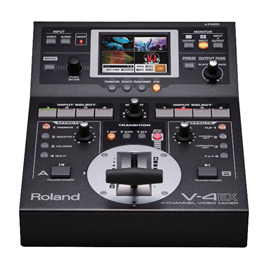
Software based solutions
If dedicated mixers and switchers are beyond your productions needs you can always look at software based solutions. Using a basic I/O device, like the Blackmagic Design Quad 2, you could take up to 8 SDI inputs into your computer and use a software based solution. Solutions from Wirecast allow you to mix and stream without the need for a bulky hardware panel.
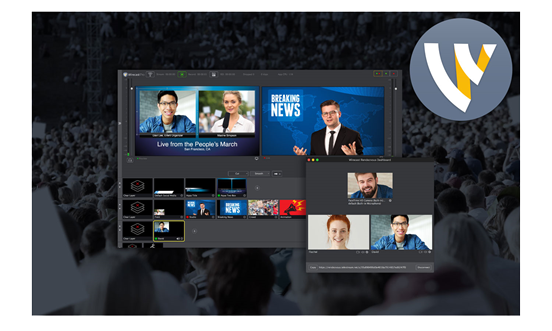
The best mixers and switchers
There you have it, everything you need to know when choosing a mixer or switcher. We hope you've found this buyers guide helpful. Don't hesitate to contact one of our friendly advisors for more advice if you still have questions on how to select the perfect mixer or switcher. If you’re all set to go we recommend checking out the mixers and switchers from these top brands.
VIEW RANGE